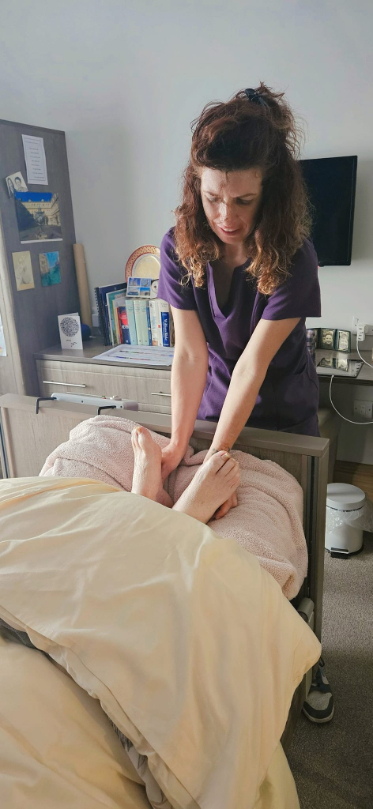What is a Continuum of Care?

In the realm of healthcare and senior living, the concept of a continuum of care is essential to ensuring individuals receive the right level of support throughout different stages of their lives. Whether it's a short-term rehabilitation, long-term nursing care, or assisted living, a well-structured continuum of care ensures that individuals transition seamlessly from one type of care to another without disruption.
This comprehensive system plays a crucial role in enhancing quality of life, reducing hospital readmissions, and providing peace of mind for family members.
Understanding the Continuum of Care
A continuum of care refers to a coordinated system of healthcare services that cater to an individual's needs over time. It encompasses everything from preventative care and independent living to intensive medical support. The goal is to provide consistent, high quality care services tailored to each person's specific needs while ensuring smooth transitions between different levels of care.
The continuum of care model is especially significant for older adults and those with chronic health conditions who may require different types of support as their needs evolve. A well-structured continuum reduces gaps in care, prevents unnecessary hospitalisations, and enhances overall well being.
The Different Stages of a Continuum of Care Model
The continuum of care includes multiple stages, each catering to different levels of medical and personal care needs. Here are some of the key components:
1 . Preventative and Wellness Care
The foundation of a strong continuum of care begins with preventative measures. Routine check-ups, health screenings, vaccinations, and wellness programs help individuals maintain their health and avoid chronic conditions. Lifestyle counselling, fitness programs, and nutritional guidance play a crucial role in this stage.
2 . Home-Based Care and Support Services
For individuals who can live independently but require some assistance, home-based care is an ideal option. This includes in-home nursing care, personal care assistance, and home modifications to enhance safety. Home healthcare services ensure individuals receive medical support without leaving their familiar surroundings.
3 . Assisted Living
As individuals age or develop conditions that make daily living more challenging, assisted living communities offer a supportive enivornment. Assisted living provides help with daily tasks such as bathing, dressing, medication management, and meal preparation while allowing residents to maintain a level of independence.
4 . Skilled Nursing and Rehabilitation
After surgery, illness, or injury, some individuals require skilled nursing or rehabilitation services. Short-term rehabilitation programs help patients recover and regain their strength before returning home. Skilled nursing facilities provide round-the-clock medical care for those who need more intensive support.
5 . Long-Term Care
For individuals with chronic illnesses or disabilities that require ongoing assistance, long-term care facilities provide comprehensive support. Nursing homes and specialised care units cater to those who can no longer live independently due to cognitive decline, mobility issues, or serious medical conditions.
6 . Memory Care
Specialised memory care programs support individuals with dementia and Alzheimer's disease. These facilities offer structured environments, cognitive therapies, and trained staff to ensure safety and engagement for residents with memory impairments.
7 . Hospice and Palliative Care
In the final stages of life, hospice and palliative care services focus on comfort, pain management, and emotional support. These services provide compassionate end-of-life care for individuals with terminal illnesses, ensuring dignity and quality of life.
The Benefits of a Seamless Continuum of Care
A well-integrated continuum of care offers numerous advantages to individuals, families, and the healthcare system:
Smooth Transitions: One of the most significant benefits is the ability to move seamlessly between different levels of care as needed, reducing stress for individuals and their families.
Improved Health Outcomes: Coordinated care ensures that individuals receive timely interventions, reducing complications and promoting better health.
Personalised Support: Each stage of the continuum of care is tailored to an individual's unique needs, ensuring they receive appropriate assistance without unnecessary medical interventions.
Reduce Hospital Readmissions: By providing continuous monitoring and preventive care, a well-structured system helps reduce hospitalisations and emergency visits.
Emotional and Psychological Well-Being: Knowing that a loved one is receiving the right care at every stage provides peace of mind to families and caregivers.
The Role of Care Coordination
A successful continuum of care relies on strong coordination among healthcare providers, caregivers, and families. Effective communication and collaboration ensure that each individuals needs are met at every stage. Healthcare professionals, social workers, and case managers play a crucial role in guiding individuals and their families through care transitions.
Technology also plays an essential role in enhancing coordination. Electronic health records (EHRs), telehealth services, and remote monitoring tools allow healthcare providers to track patient progress and adjust care plans accordingly. By leveraging these tools, healthcare systems can ensure continuity and efficiently.
Challenges in Implementing a Continuum of Care
Despite its many advantages, implementing a seamless continuum of care comes with challenges:
Fragmented Healthcare Systems: In many regions, healthcare services are not fully integrated, leading to gaps in care.
Cost Barriers: Some individuals may face financial difficulties in accessing certain levels of care.
Workforce Shortages: A shortage of healthcare professionals, particularly in specialised fields, can make it difficult to provide continuous support.
Lack of Awareness: Many individuals and families are unaware of the full range of care options available, making it challenging to plan for future needs.
Addressing these challenges requires policy changes, improved funding, and better education about care options. Expanding access to integrated healthcare systems and increasing support for caregivers can enhance the effectiveness of the continuum of care.
How to Navigate the Continuum of Care for a Loved One
If you have a loved one who requires ongoing support, understanding and navigating the continuum of care can be overwhelming. Here are some steps to help guide the process:
1 . Assess Current and Future Needs
Consider your loved one's current health status and anticipate future care needs to make informed decisions.
2 . Explore Available Options
Research different care services, facilities, and home-based support options to find the best fit.
3 . Consult Healthcare Professionals
Work with doctors, social workers, and care coordinators to create a comprehensive care plan.
4 . Plan Financially
Understand the costs associated with different levels of care and explore insurance coverage, government programs, and financial assistance options.
5 . Monitor and Adjust
Care needs may change over time, so it's essential to regularly reassess and adjust the care plan as necessary.
A continuum of care is a vital framework that ensures individuals receive consistent and appropriate support throughout their healthcare journey. From preventative care to long-term nursing and hospice services, this model promotes seamless transitions and enhances quality of life.
While challenges exist, the benefits of a well-structured continuum far outweigh the difficulties, providing individuals and their family members with the peace of mind that they will always have access to the care they need.
By understanding the continuum of care model and planning ahead, individuals can make informed decisions that support their long-term well being. Whether through home care, assisted living, or specialised medical services, the key is ensuring that every individual receives the right care level at the right time.






